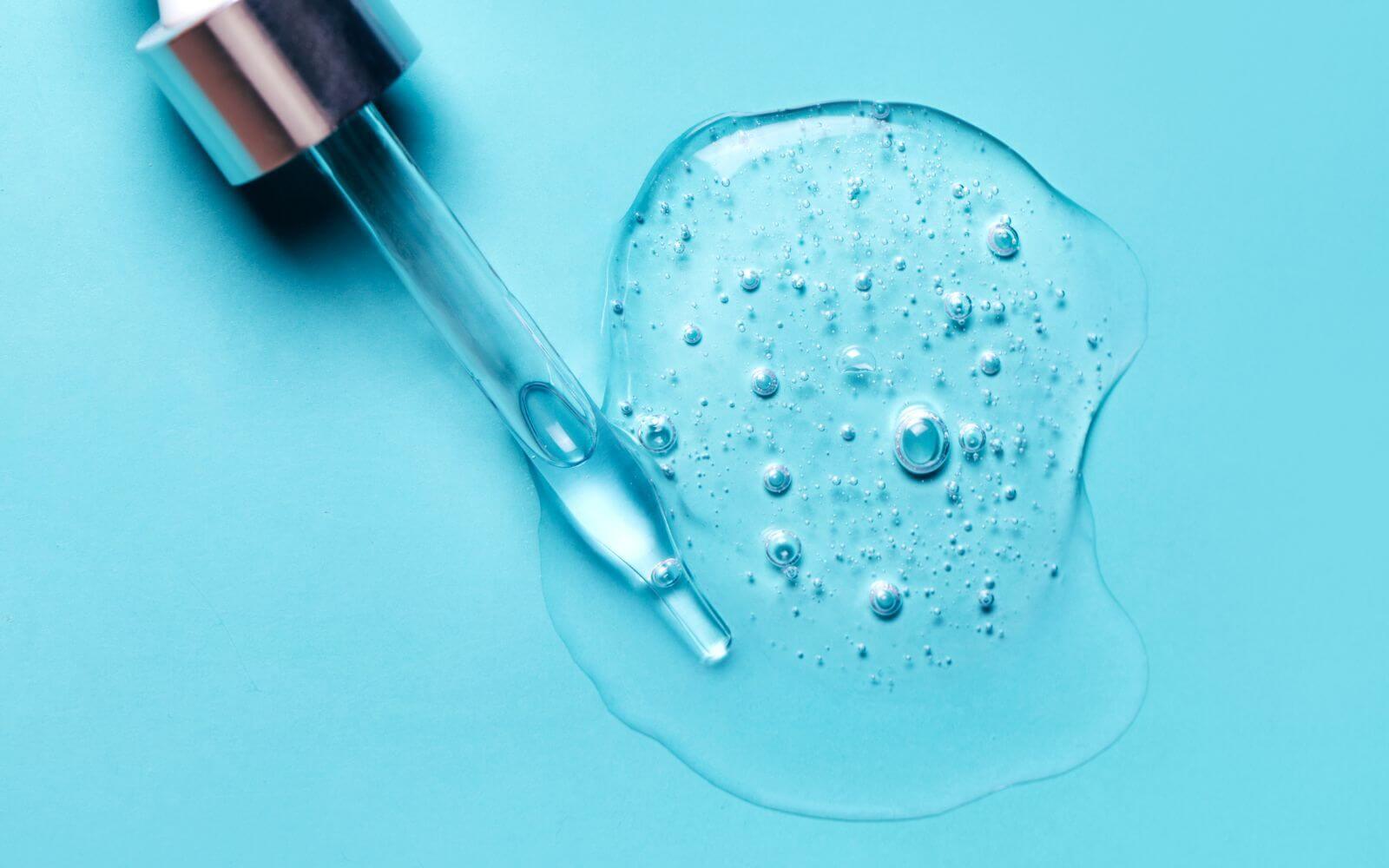
Active ingredient of the month March: Sodium hyaluronate
Sodium hyaluronate or hyaluronic acid is an endogenous substance that is mainly found in joints and connective tissue. Together with water, hyaluronic acid forms a viscous gel, making it the ideal lubricant in the body.
Astonishingly, one gram of hyaluronic acid is able to bind up to six liters of water. This extraordinary storage capacity makes them a universal helper in the body. Around 50% of the amount is found in the skin and in the spaces between the skin cells to ensure stability and elasticity. Hyaluronic acid fulfils a particularly important function in the vitreous body of the eye – the central, translucent area. It contains a mixture of 2% hyaluronic acid and 98% water – a viscous gel that is permeated by collagen fibers. Thanks to hyaluronic acid, the vitreous remains elastic, stable and transparent.
Lubricant and shock absorber at the same time
Hyaluronic acid is the ideal shock absorber in the body. It binds water in the connective tissue and thus protects it from pressure and impacts. In the intervertebral discs, the gel also absorbs compressive forces. Thanks to its viscosity, it is the perfect lubricant for joints.
In the medical field, sodium hyaluronate, i.e. the sodium salt of hyaluronic acid, is used. While it used to be extracted from rooster combs, today it can be produced synthetically. The areas of application are as diverse as the active ingredient itself.
Injections for supple joints
Hyaluronic acid can be injected directly into joints to improve lubrication – for example, in the case of osteoarthritis or age-related wear and tear.
Hyaluronic acid forms a fine layer around joint cartilage and prevents damage caused by inflammatory molecules.
It can even be taken orally for this purpose. However, a higher concentration in the joint can be achieved through injections.
Hyaluronic acid in ophthalmology
In the case of dry eyes, wetting eye drops often only provide short-term relief. Preparations with hyaluronic acid, on the other hand, provide a more lasting effect. They stabilize the tear film without impairing vision.
Hyaluronic acid is also used in surgical procedures on the eye. For example, the vitreous body can be stabilized by filling it with an appropriate solution.
Implacement therapy against incontinence
In the context of so-called stress urinary incontinence, involuntary leakage of urine occurs, especially when coughing, sneezing and laughing. In the so-called implacement therapy, hyaluronic acid gel is injected around the urethra to plump up the tissue.
Hyaluronic acid for aesthetic purposes
Hyaluronic acid is particularly well-known for its use in aesthetic medicine. Most often, the active ingredient is used to inject wrinkles on the face. This not only plumps up wrinkles, but also activates skin regeneration at the same time.
In addition to concealing small wrinkles, facial contours can be adjusted with hyaluronic acid. For example, narrow lips are filled in and remodeled. Even minor rhinoplasty is possible, as long as it is only a small asymmetry.
Hyaluronic acid in skin care
In the cosmetics industry, hyaluronic acid is an integral part of anti-aging creams, eye gels, day and night creams. Skin cared for with hyaluronic acid is smoother, plumper and has fewer wrinkles. Care products are a good alternative for those who do not want to be injected.
Sodium hyaluronate – made in Europe
Are you interested in Sodium hyaluronate? Then we look forward to your inquiry. Our European partner manufactures the product using the fermentation process. You can get Sodium hyaluronate in every quality and quantity – from pharmaceutical grade with all important documents to cosmetic grades and food grades.





 4c media
4c media